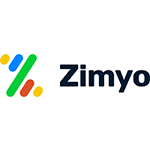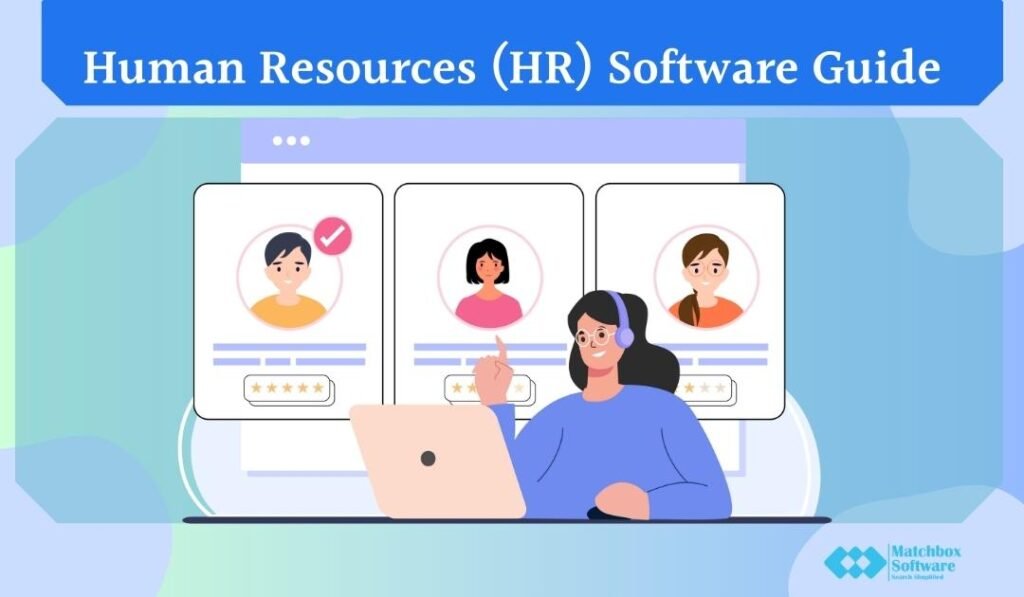Best Human Resource Software (HR Software)
Revolutionize your HR management with our cutting-edge software. Enhance efficiency, boost productivity, and simplify HR tasks effortlessly. Experience the future of Best Human Resource Software solutions today.
Featured Softwares
List of 10 Best HR Management Software
Have Questions? We can help!
Get personalized recommendations from our experts on call!
Top Trending Softwares

Zimyo
Zimyo stands as the number one Employee Experience Platform, offering a comprehensive human resource management solution that empowers organizations to excel in managing and retaining exceptional talent.
Table of Contents
What is Human Resource (HR) Software?

HR software serves as a platform that empowers companies to establish an efficient workflow for their HR activities. Primarily, the software automates essential administrative assignments, including onboarding, recruitment, payroll, and overseeing performance. Businesses of various scales can leverage HR software to effectively navigate the complete employee journey, from recruitment throughout their tenure until retirement. This software commonly encompasses functionalities like applicant tracking, self-service options for employees, monitoring attendance and work hours, managing performance, overseeing compensation, and ensuring adherence to regulations.
Why Your Business Should Utilize HR Software?
An HR management system offers significant advantages by optimizing human hours. HR solutions efficiently automate fundamental processes, including:
1. Managing holiday allowances
2. Tracking KPIs/KRAs
3. Monitoring absences
4. Coordinating events
5. Facilitating training
Moreover, this software enhances process efficiency, increasing employee and HR managers’ productivity.
How does a HRMS work?
An HR system, or human resource management system (HRMS), is a software application that automates and streamlines many human resources management processes. It can help organizations manage their employees more effectively, from recruitment and onboarding to payroll and benefits administration.
An HR system typically includes the following modules:
• Recruitment: This module helps organizations attract, screen, and select new employees. It supports post-job openings, manages applicant tracking, and conducts interviews.
• Onboarding: This module helps organizations to welcome new employees and get them up to speed on their roles and responsibilities. It creates onboarding checklists, provides training materials, and tracks employee progress.
• Payroll: This module helps organizations to calculate and pay employee wages and salaries. It tracks timesheets, manages deductions, and generates tax reports.
• Benefits: This module helps organizations manage employee benefits programs, such as health insurance, retirement savings, and paid time off. It tracks eligibility, enrollment, and changes to benefits.
• Performance management: This module helps organizations set goals, track performance, and provide employee feedback. It creates performance plans, conducts reviews, and manages compensation.
• Training and development: This module helps organizations provide training and development opportunities to employees. It tracks training needs, creates training courses, and manages assessments.
• Absence management: This module helps organizations track employee absences, such as sick leave and vacation days. It is to approve or deny requests, generate reports, and manage compliance with labor laws.
• HR analytics: This module helps organizations collect and analyze workforce data. It is to identify trends, improve decision-making, and make better business decisions.
The specific modules included in an HR system will vary depending on the organization’s needs. However, most HR systems will have modules covering the most common HR functions.
What are the benefits of HR system?
Here are some benefits of using an HR system:
• Increased efficiency: An HR system can automate many of the manual tasks involved in HR, such as applicant tracking, payroll processing, and benefits administration. This can free HR professionals to focus on more strategic and value-added activities.
• Reduced costs: An HR system can reduce costs by automating tasks that would be done manually. It can also help improve accuracy and compliance, saving money in the long run.
• Improved compliance: An HR system can help organizations comply with labor laws by tracking employee data and generating reports. This can help to avoid costly fines and penalties.
• Improved decision-making: An HR system can help organizations make better decisions about their workforce by providing access to data and analytics. This data can help to identify trends, assess risks, and make more informed decisions.
• Improved employee engagement: An HR system can improve employee engagement by providing self-service capabilities and making it easier for employees to access information and services. This can help to reduce turnover and improve productivity.
What are the features of HR software?
The features of HR software can vary depending on the specific system, but some of the most common features include:
• Recruitment and onboarding: This module helps organizations attract, screen, and select new employees. It can also post job openings, manage applicant tracking, and conduct interviews.
• Payroll: This module helps organizations to calculate and pay employee wages and salaries. It can also track timesheets, manage deductions, and generate tax reports.
• Benefits: This module helps organizations manage employee benefits programs, such as health insurance, retirement savings, and paid time off. It can track eligibility, enrollment, and changes to benefits.
• Performance management: This module helps organizations set goals, track performance, and provide employee feedback. It can create performance plans, conduct reviews, and manage compensation.
• Training and development: This module helps organizations provide training and development opportunities to employees. It can track training needs, create training courses, and manage assessments.
• Absence management: This module helps organizations track employee absences, such as sick leave and vacation days. It can approve or deny requests, generate reports, and manage compliance with labor laws.
• HR analytics: This module helps organizations collect and analyze workforce data. This data can help to identify trends, improve decision-making, and make better business decisions.
• Self-service: This module allows employees to access their information and perform tasks without going through HR. This can free up HR professionals to focus on more strategic tasks.
• Compliance: This module helps organizations to stay compliant with labor laws and regulations. It can track employee data, generate reports, and manage risk.
• Document management: This module allows organizations to store and manage employee documents, such as contracts, performance reviews, and training records.
• Employment law compliance: This module helps organizations to stay compliant with labor laws and regulations. It can track employee data, generate reports, and manage risk.
• Workforce planning: This module helps organizations plan for future workforce needs. It can forecast demand, identify skills gaps, and develop succession plans.
• Employee engagement: This module helps organizations to improve employee engagement. It can conduct surveys, track employee satisfaction, and provide feedback.
The specific features that are most important for an organization will vary depending on its size, industry, and needs. However, all HR software should have the core features listed above.
What are the factors to consider in choosing HR software?
HR software serves as a platform that empowers companies to establish an efficient workflow for their HR activities. Primarily, the software automates essential administrative assignments, including onboarding, recruitment, payroll, and overseeing performance. Businesses of various scales can leverage HR software to effectively navigate the complete employee journey, from recruitment throughout their tenure until retirement. This software commonly encompasses functionalities like applicant tracking, self-service options for employees, monitoring attendance and work hours, managing performance, overseeing compensation, and ensuring adherence to regulations.When choosing HR software, it is essential to consider the following factors:
• Your needs: The first step is to assess your organization’s needs and determine which features are most important to you.
• Your budget: HR software can range in price from a few thousand dollars to hundreds of thousands. It is essential to choose a system that fits your budget.
• Your IT infrastructure: You must ensure that your IT infrastructure can support the HR software.
• Your implementation plan: You must develop a plan for implementing the HR software and training your employees on how to use it.
HR software can be a valuable tool for organizations of all sizes. By automating and streamlining many HR processes, HR software can free HR professionals to focus on more strategic and value-added activities. If you are considering implementing HR software, be sure to do your research and choose a system that meets your specific needs.
What are the top 5 HR Software?
1. Monday.com HR is a cloud-based HR software that offers a wide range of features, including applicant tracking, onboarding, payroll, benefits, performance management, and more. It is known for its user-friendly interface and ability to integrate with other business applications.
2. Rippling is a cloud-based HR software that offers a suite of HR and payroll features, including onboarding, time tracking, benefits, and compliance. It is known for its ease of use and ability to automate many HR tasks.
3. BambooHR is a cloud-based HR software that offers a suite of HR features, including applicant tracking, onboarding, payroll, benefits, and performance management. It is known for its affordability and its customer support.
4. Workday is a cloud-based HR software that offers a suite of HR and financial management features. It is known for its scalability and ability to meet large organizations’ needs.
5. ADP Workforce Now is a cloud-based HR software that offers a suite of HR and payroll features. It is known for its integration with other ADP products and its ability to meet the needs of small and mid-sized businesses.
What is the Cost of HR Software?
The expense of HR software can vary significantly based on the business’s features, capabilities, and scale. Generally, HR software offers a range of pricing choices, such as subscription-based models, per-employee rates, and one-time licensing charges. Some HR software vendors may offer a trial period or a limited-functionality freemium version. Fundamental HR software functions, like overseeing employee databases, managing leave requests, and tracking work hours, can have a cost ranging between $4 to $15 per employee per month. For more advanced features like applicant tracking, performance management, and payroll administration, the pricing can fluctuate from $10 to $30 per employee per month.
HR software is a digital solution that helps streamline human resource management tasks, such as payroll, employee records, and recruitment. It enhances efficiency, reduces errors, and ensures compliance with HR regulations.
HR software can boost employee engagement through features like self-service portals, performance management tools, and communication platforms, fostering better communication and employee development.
HR software is beneficial for businesses of all sizes. Many solutions offer scalable options, making it suitable for small businesses looking to grow or larger organizations seeking to streamline HR operations.
When choosing HR software, consider features like payroll processing, employee onboarding, time and attendance tracking, reporting, and compliance management to ensure it meets your organization’s needs.
HR software improves data security by centralizing sensitive HR information, providing role-based access control, and automating compliance-related tasks, reducing the risk of data breaches and regulatory violations.

